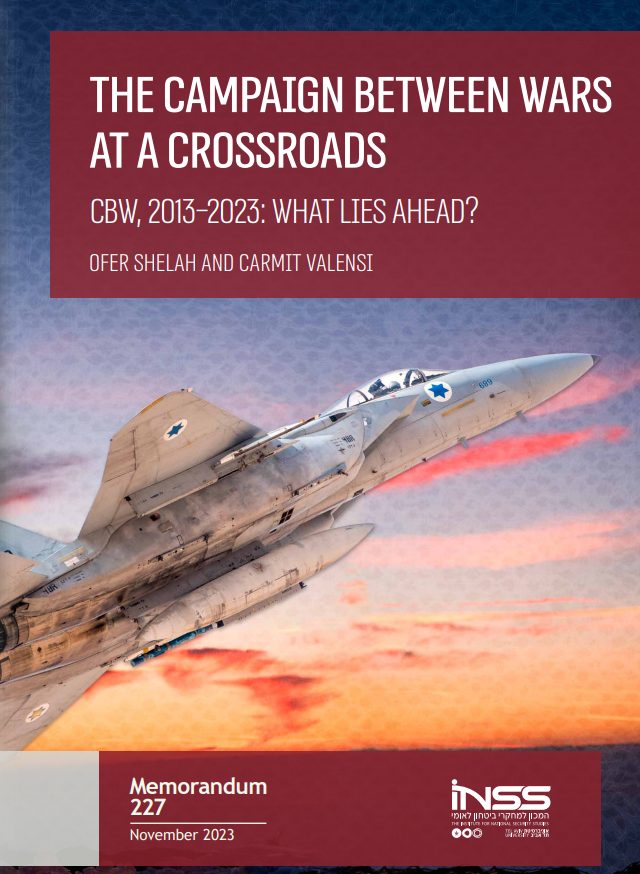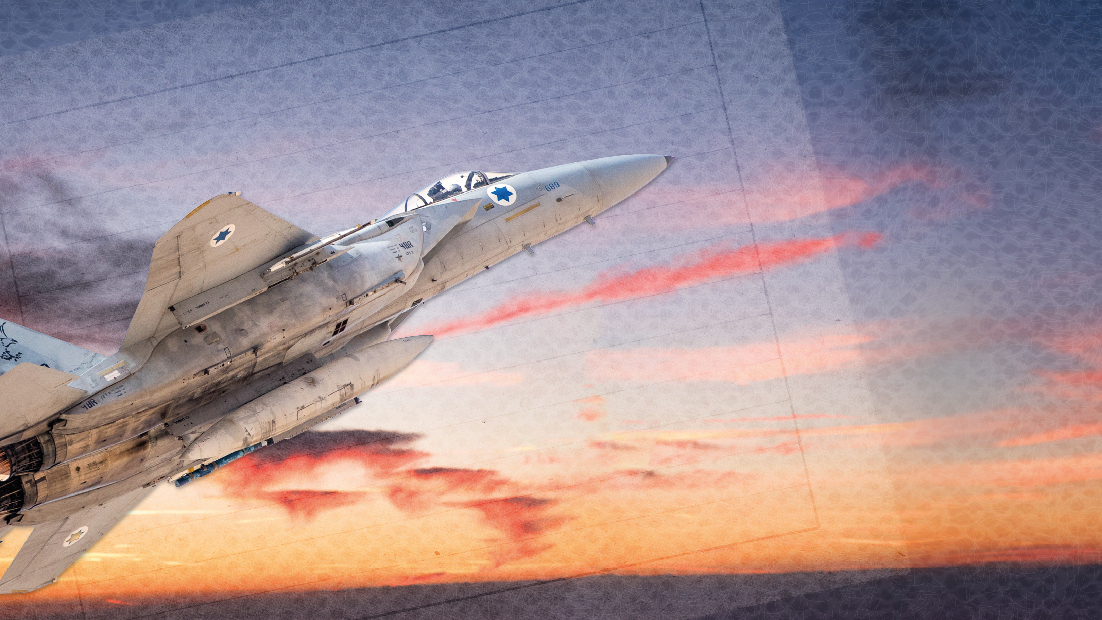Publications
Memorandum 227, November 2023

The Campaign Between Wars (CBW) is the term given to the IDF’s significant offensive activity over the past decade. What began in 2013 as specific, targeted actions with limited objectives, developed into an extensive campaign in physical and geographical terms and was anchored in the IDF operations approach, with far-reaching strategic ramifications.
CBW did indeed demonstrate advanced capabilities in intelligence and aerial action. But at the end of a decade and in view of significant changes in the region, there is a need to review and update the campaign’s benefits and its influence on Israel’s regional situation, the danger of a multi-front conflict, and IDF readiness for such a conflict.
This memorandum examines CBW’s roots in the IDF operational concept, its development, and its achievements and limitations, and considers how it has been perceived by Israel’s various enemies during different phases over the past decade. It also examines recent significant changes in the arena and in the world. The study concludes that the current policy provides only a partial response to the the “axis of resistance” led by Iran, and even reinforces the willingness of the enemies to take risks that could lead to escalation; on the other hand, CBW does not necessarily contribute to the IDF’s preparedness to meet these risks.
Consequently, a change in the operational concept is recommended, with the following action items: sharpen the kinetic activity and develop other ways of operating in order to achieve Israel’s objectives in Syria and in Lebanon; prepare the IDF for a multi-front conflict and underscore through preparations and actions that Israel is not afraid of such a conflict; work on creating regional and global coalitions that can act as a counterweight to the growing power of Iran, the axis of resistance, and the increasing closeness to Russia and China. In this way Israeli activity can reduce the chances of escalation while improving readiness if it does occur.
Click here to download the full Memorandum
Israel is making an effort to amend the pre-war situation in at least one important aspect: the distancing of Hezbollah’s Radwan elite units from its border, and the reestablishment of the situation on the ground predicated in UN Resolution 1701, reached with the conclusion of the Second Lebanon War in 2006: no Hezbollah military presence south of the Litani River. It has yet to be seen whether that is achievable without larger scale military operations. All of this will obviously have a considerable effect on the future objectives and methods of Israel’s “campaign between wars” (CBW). Our conclusion in the memorandum, namely, that there is an urgent need to examine in depth the objectives, achievements, and future operational directions of the campaign between wars, as perhaps it had exhausted its usefulness, may seem obvious at this stage.
On the other hand, within the Israeli military establishment there is a growing understanding of some of the conclusions drawn in the memorandum, for example, that CBW helped Israel’s enemies develop their “axis of resistance” strategy. The tragic events of October 7 also brought home all too painfully the effects of ignoring the impact of the emphasis on CBW on Israel's readiness for war, and in particular, multi-front war. Some will argue that under the current circumstances Israel is already facing a multi-front war, both in terms THE CAMPAIGN BETWEEN WARS AT A CROSSROADS THE CAMPAIGN BETWEEN WARS AT A CROSSROADS 8 of the readiness of the force and in terms of the enemy's belief that Israel is averse to conflict. This too is discussed in this study.
CBW will be different after the war is over. We believe that a study of its origins, developments, and effects on both sides, like the one presented here, is essential for future decisions about Israel’s future security policy, as well as the IDF’s force buildup and concept of operation.



